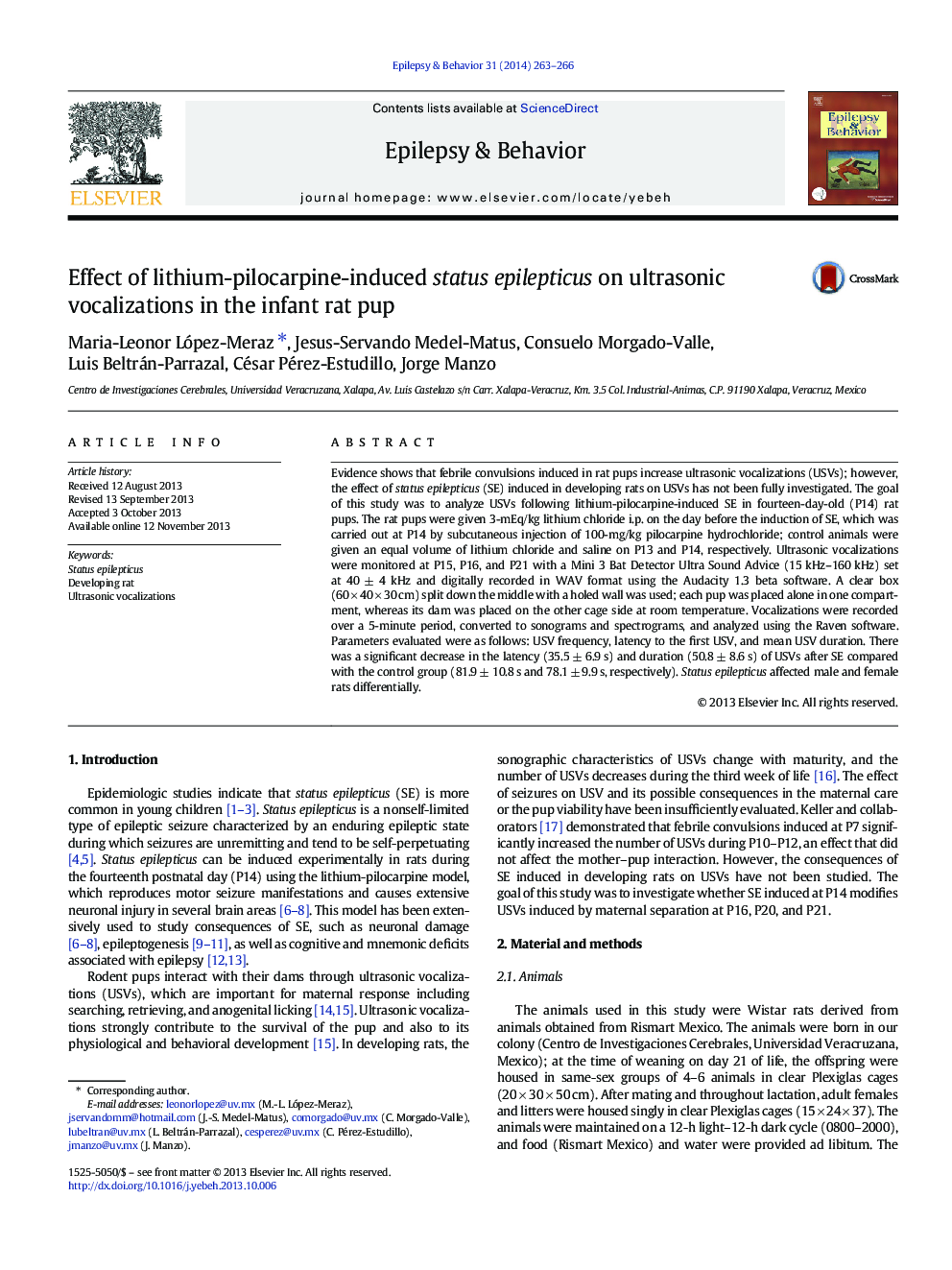| Article ID | Journal | Published Year | Pages | File Type |
|---|---|---|---|---|
| 6012497 | Epilepsy & Behavior | 2014 | 4 Pages |
â¢SE was induced by lithium-pilocarpine in fourteen-day-old (P14) rat pups.â¢Maternal separation-induced USVs were monitored at P15, P16, and P21.â¢SE did decrease the latency to the first USV and the average duration of USVs.â¢The effect of SE on USVs was observed in male, but not in female, rat pups.
Evidence shows that febrile convulsions induced in rat pups increase ultrasonic vocalizations (USVs); however, the effect of status epilepticus (SE) induced in developing rats on USVs has not been fully investigated. The goal of this study was to analyze USVs following lithium-pilocarpine-induced SE in fourteen-day-old (P14) rat pups. The rat pups were given 3-mEq/kg lithium chloride i.p. on the day before the induction of SE, which was carried out at P14 by subcutaneous injection of 100-mg/kg pilocarpine hydrochloride; control animals were given an equal volume of lithium chloride and saline on P13 and P14, respectively. Ultrasonic vocalizations were monitored at P15, P16, and P21 with a Mini 3 Bat Detector Ultra Sound Advice (15 kHz-160 kHz) set at 40 ± 4 kHz and digitally recorded in WAV format using the Audacity 1.3 beta software. A clear box (60 Ã 40 Ã 30 cm) split down the middle with a holed wall was used; each pup was placed alone in one compartment, whereas its dam was placed on the other cage side at room temperature. Vocalizations were recorded over a 5-minute period, converted to sonograms and spectrograms, and analyzed using the Raven software. Parameters evaluated were as follows: USV frequency, latency to the first USV, and mean USV duration. There was a significant decrease in the latency (35.5 ± 6.9 s) and duration (50.8 ± 8.6 s) of USVs after SE compared with the control group (81.9 ± 10.8 s and 78.1 ± 9.9 s, respectively). Status epilepticus affected male and female rats differentially.
